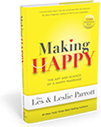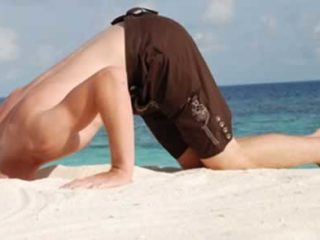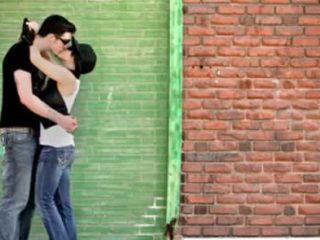Several years ago, I took my first trip to Israel. Our group traveled on a luxurious tour bus from one ancient city to the next, taking in the wonderful religious and spiritual sites of the Holy Land. In between the cities we would pass by hot, dry desert hills on the left and right. It appears to be the part of the Holy Land that the milk and honey never reached. Even though I was encased in an air-conditioned vehicle, my impulse was to reach for my bottled water and my fifty?block sunscreen.
Intermittently on these various hillsides were the shabby box tents of the Bedouin shepherds. I remember shaking my head and pondering how difficult life must be for them. Each of my four children has their own room equipped with gadgets too embarrassing to speak of here.
As I gazed at the tents, they did not appear to have a 4/3/3 configuration (four bedrooms, three baths, three-car garage). I remember studying about the Bedouin in seminary in connection with the little shepherd boy who found some of the Dead Sea Scrolls in a cave in the ancient Qumran community in 1947. The photographed faces of the men and women in the tents I studied contained deep wrinkles parched by excessive exposure to the sun. The gap in the way of life between those of us on the tour bus and the Bedouin shepherds was enormous. I definitely felt I was the privileged one.
Then our Arab-Christian tour guide grabbed the microphone at the front of the bus and turned my world upside down. He said, “Off to your right you will see the mobile residence of the Bedouin shepherd and his family. Once their livestock has grazed the available vegetation, the family will pick up their humble homes and move to a new place to repeat the cycle.” He went on to say that the average Bedouin lives to be over one hundred years old! Without even meaning to, I blurted out, “How can this be?” Abed, the guide, informed us of a study recently completed by the government of Israel. They were just as curious about the Bedouin’s longevity as I was and wanted to get to the bottom of their secret, bottle it, and sell it alongside the mineralrich mud of the Dead Sea that promises to create youthful skin. It was obvious by looking at them that the Bedouin did not apply the mudpacks to their faces, but they did something far better.
The first hunch was to study the diet of the Bedouin. While it is true that their meals included whole foods, no preservatives, no candy, and a moderate intake of meat, this was not the number one cause of the Bedouin’s longevity. Abed revealed the secret: no stress.
This makes complete sense! Stress makes us sick, drives us crazy, and can kill us some thirty years before a poor shepherd dies at the age of a hundred. Most Bedouin would not change places with us, even if given the opportunity. And why would they? So they can be stressed out as they run hard to nowhere?
What does the average day in the life of the Bedouin family look like?
The family rises from their tents slightly before sunrise so they are ready to capture the precious hours of sunlight. There is just enough sun peering over the horizon to see the objects in front of them. As the sun comes up, each member of the family has a job to do. Some tend the sheep — the core business of the Bedouin. Some make clothes or prepare for the upcoming meals. Some will mend with needle and thread the tears in the tents. At various intervals the Bedouin make their way to town to barter the wool of their sheep for other staple items such as food and materials.
Whatever work to be accomplished is done during the day before the sun sets. There is no artificial light to expand the workday. Everyone gathers back to the cluster of tents — mother, father, children, grandparents, aunts, uncles. There are no television sets, no phone calls, no emails. Each night the family gathers for dinner. They are in no particular hurry. Often a fire is built and the Bedouin young and old, gather around it. There may be music and singing, and stories from the past as well as stories of the day are told. Each evening can involve three to four hours of simply being together.
But I’ve found this concern to be unfounded in the practice of progressional dialogue. Far from pulling us in the direction of heresy, including collective conversation in our sermon time has in many, many instances led to greater understanding for the people in our community. In fact, I find that working out our questions and wonderings in the context of the group actually prevents the heretical thinking so easily found in individuated expressions of faith. When people set their ideas on the table, those who might lean toward heresy or idiocy are quickly called out by the group.
Because so much of the work of the Bedouin is physical, there is no need to squeeze in a trip to the gym across town or an appointment with a personal trainer. They are tired at the end of the day and routinely go to bed at the same time each night. As the young Bedouin shepherd boy lies down, all is quiet and peaceful; there is no incessant noise of city life to contend with. He peers up into the sky filled with constellations. Thoughts of a mighty God swim in his head. These will be his last thoughts as he falls asleep. Some say the slumber of the Bedouin is a deep replenishing sleep that eludes most “privileged” suburbanites.
Even now as I write this chapter it is Christmas Day, and I’m stuck in an airport in Charlotte, North Carolina, trying to get my family across the country from Texas to Ohio to be with our extended families for the holidays. We just received news that our flight has been cancelled. This is the second flight cancelled for us today. It’s highly probable we’ll spend the remainder of this special day right here in the airport. I walked into a little bar and grill in the airport called “Cheers.” Everything looks like it came right out of the set of the famous Boston sitcom. Only one problem: Nobody knew my name. We were in a strange place, we had a fast-food dinner, and we didn’t have a single family member in the entire state of North Carolina with whom to share Christmas. All this for a mere $1,800 in airfares. You really have to have a little discretionary money or air miles to ruin a great holiday. For some reason, I think the Bedouin shepherd would get a bigger laugh about my Christmas experience than anything Shelly Long ever said to Ted Danson!
The Bedouin do not live the hectic life of managing disconnected worlds of shallow linear relationships. There is a beautiful simplicity and a unity and rhythm with creation that extends their lives some thirty years beyond ours. They do not have access to our money or our medications. They have no need for them. The Bedouin are not the only people group that has discovered this kind of life — but it is a life that eludes the American suburbanite, almost as though we weren’t invited to the meeting or didn’t get the memo. Or could it be that we ignored it?.
What is the secret of the Bedouin? The Bedouin approach relationships and time in a manner completely different from the way we do. This is their secret. It is a way of life that dances with the rhythm of creation. It is a way of life that is filled with a certain brand of community. It is a way of life that is free from the kind of stress we inflict on our lives and that creates all kinds of emotional and physical health problems that can take us out earlier than the master plan demands. Make this note: This lifestyle can’t be bought with money.
As a matter of fact, the excessive money of many Americans may be the single greatest obstacle to attaining a stress-free lifestyle. We can have the money to purchase the nicest and most exotic hammock made, but it doesn’t mean that we’ll find much rest in it. Who knows, if we point the next generation to the right path and attempt to actually live in community and reject crowded loneliness, perhaps their children will be rightfully called “the New Bedouin!”
Adapted from Making Room for Life: Trading Chaotic Lifestyles for Connected Relationships by Randy Frazee.
Copyright © 2005 by Randy Frazee, published by Zondervan, used with permission.











